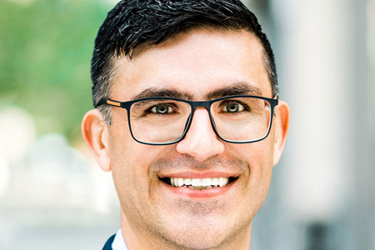Siteless DCTs Are Real … And Happening Now

By Dan Schell, Chief Editor, Clinical Leader

A true DCT is a bit of a unicorn these days. And to be clear, I’m not talking about some pseudo hybrid trial where patients can come into a site sometimes but still mostly participate in a trial from their home. I’m talking about a siteless trial — you know, that concept that, during COVID, promised a revolution, subsequently raised the hackles of the site community, and has since been rarely seen or discussed. That’s why I was surprised to find out that Praxis Precision Medicines was working on a Phase 3 DCT that enabled older adults with essential tremor (ET) to participate in the trial solely from their homes. To find out more, I spoke with Marcio Souza, PharmD, the company’s president and CEO.
WHY THIS TRIAL WAS A GOOD FIT FOR A DCT
I knew of Souza because he had participated in a video roundtable in 2021 that our sister publication, Life Science Leader, had arranged. In that roundtable, he discussed how he had accepted the top position at Praxis during COVID and subsequently took the company public — neither of which were small feats.
You could say the challenges continued when the company decided to pursue a DCT for its investigational drug ulixacaltamide (PRAX-944), which is designed to help people with ET, a neurological condition that causes involuntary and rhythmic shaking. But Souza says the decision was actually an easy one. “There were multiple factors that made this trial a good fit for a DCT, “he says. “First, the condition itself is very prevalent and doesn’t have an endpoint requiring specialized measurement equipment. It’s also not a condition that requires a patient to regularly see their physician, which means, unlike say an oncology patient, these patients don’t need to go to a site to participate in a trial. In fact, from what they told us, they prefer to be at home. Finally, when we were developing the trial design, the FDA was getting ready to deploy its DCT Guidance. So, we were able to make sure we were doing everything that was expected.”
COMBINING TELEHEALTH & HOME HEALTH NURSING
Dubbed ESSENTIAL3, this 12-week trial leverages telehealth and home health nurse visits as well as phone support from study staff. Praxis uses a combination of nurses from UBC and those it contracts with directly. The nurses visit the patients at home to ensure drug dispensation safety (in addition to the PI) and to administer EKGs or blood draws as needed. The PI conducts a telemedicine visit at the start of the study and then every other week for the first eight weeks and then every week for the following four weeks.
The intermittent nature of these visits and assessments fits this condition well because the tremors are also sporadic. Thus, during the assessments, patients verbally convey how they have been doing recently, on average, with everyday activities such as eating, drinking, dressing, holding an item, and writing. There are 12 areas that are assessed, including their voice tremors.
The loss of an opportunity for an older patient to socialize (i.e., visit a site) is often cited as a shortcoming of DCTs. But for people with ET, there’s often a reluctance to be frequently in public due to their uncontrollable shaking. “When patients heard that they could participate from the comfort of their home, there was an overwhelming interest [approximately 50,000 patients reached out to participate] in this study,” Souza says. “And in general, I think we all underestimate the comfort level older people have with technology. Most of them have been using cell phones and computers for years, so a telemedicine visit isn’t going to be a barrier to entry.”
A QUICK PACE FROM RECRUITMENT TO DATA
The initial goal was to recruit 600, but thanks to social media campaigns, direct physician referrals, and a previous study’s database, Praxis has identified more than 7,000 patients who prequalify. [The company has not yet released enrollment numbers.] Souza says that compared to other studies that have been run for this same condition, Praxis’ DCT model is recruiting patients about three to five times more effectively. At the pace the trial is currently going, he expects to have some data to release by the end of 2024, which is just a little over a year since it was started. “By employing a DCT, we're not looking for efficiency at all costs; we are looking for — primarily — efficiencies that help patients while also helping with the drug’s development. It's a beautiful thing when you have both, and that’s where we are with this trial.”
